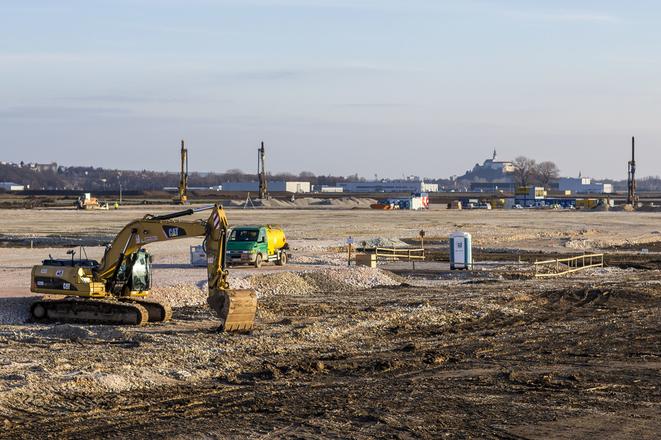SLOVAKIA is expected to continue its sound growth into the coming years, partially propelled by continuing investments in the automotive industry. Nevertheless, a possible Brexit does pose a risk to the economy, even if only a mild one, economic analysts of the National Bank of Slovakia indicate.
“The direct influence stemming from the reduction of growth of the gross domestic product in Great Britain on Slovakia’s economy might not be too significant as exports from Slovakia to Great Britain make up only about 4 percent of the aggregate of Slovakia’s export,” writes the National Bank of Slovakia (NBS).
But the NBS warned that to estimate the aggregate and complex influence of Brexit, about which Britons will decide on June 23, is complicated. Apart from possible turbulence on financial markets other issues might stem from negotiations about technical aspects of Great Britain’s departure from the EU.
“But Brexit might cause also political implications as would a discussion about the departure of other countries or a significant change of the internal integration process within the EU,” the NBS analysts wrote in a document published on June 8. “Also a more significant outflow of especially financial services from Great Britain, or a change in migration, might happen.”
Based on its calculations, Brexit might slow down the Slovak economy by an aggregate 0.34 percent until 2020, which could mean 5,300 less jobs created and a hike in prices by an additional 0.4 percent.
The NBS analysts based their estimate on an analysis of the OECD forecasting that in case Great Britain leaves the EU its economy would slow down cumulatively by more than 3 percentage points through 2020.
“But the assumed reduction of the economic growth in the eurozone would afterwards affect in a more significant way Slovakia’s export and in a lower scope also domestic sectors of the economy,” the NBS analysts wrote.
After 3.6 percent growth in 2015, Slovakia’s economy should grow by 3.3 percent in 2016, 3.5 percent in 2017 and 4.2 percent in 2018 based on the latest mid-term forecast of the central bank. It improved the forecast by 0.1 percentage points for 2016 and 0.2 points for 2017 and kept the forecast unchanged for 2018.
“The Slovak economy should continue in its growth trajectory with the price development gradually accelerating under the influence of a base effect, as well as external preconditions,” said NBS Governor Jozef Makúch on June 7 when introducing the latest mid-term forecast.
At the end of the forecast period, 2018, the GDP should be influenced by the start of new production in the automotive industry as a result of recent investments, added Makúch referring to the expected start of production in the new plant the British carmaker Jaguar Land Rover plans to build near Nitra.
Slovakia’s economic growth might be negatively influenced by developments in China and in emerging markets. “Nevertheless, one risk is closer and it is Brexit that might mean a reduction of trade between Great Britain and the eurozone,” warned Ján Tóth, the NBS vice-governor.
OECD forecast
After accelerating in 2015, economic activity should slow somewhat as the boost from exceptional absorption of EU funds fades, the OECD wrote in its latest economic forecast summary for Slovakia published on June 1. The OECD forecasts growth of 3.1 percent for Slovakia in 2016.
“Nonetheless, annual growth is projected to remain above 3 percent, led by persistently strong domestic demand,” states the forecast. “Household consumption will strengthen further, driven by improved labour market outcomes, low inflation and rising disposable income. Lower public investment will be partly compensated by new foreign direct investments in the automotive sector.”
GDP grew 3.4 percent y/y in Q1
While the NBS based its latest mid-term forecast on the flash estimate of economic growth for the first quarter of 2016, the Statistics Office published detailed data about economic growth on June 7. It improved its original estimate by 0.1 percentage point to 3.4 percent y/y and 0.8 percent q/q seasonally adjusted.
“But the look of the structure of the growth of Slovakia’s economy during the first quarter of 2016 is a bit puzzling,” Ľubomír Koršňák, analyst with the UniCredit Bank Czech Republic and Slovakia wrote in his memo.
While domestic demand remained in line with expectations and as the driving force of economic growth, the net contribution from abroad was moderately negative during the first quarter.
“Especially the turnover in foreign trade was disappointing,” wrote Koršňák, when it more or less stagnated in fixed prices. Exports grew 0.2 percent and imports 0.4 percent y/y. “It seems that Slovak exporters did not manage to increase their market share on foreign markets; but also some other countries of central and eastern Europe reported a slowdown in foreign trade.”
Koršňák wrote that especially a surprising slowdown in some sectors of the German economy might have been behind this development.
Domestic demand also brought some contradictory results when the growth of household consumption keeps lagging behind the increase in incomes of Slovak households benefiting from growing employment and wages.
“Slovak households keep assessing higher incomes as an opportunity for saving rather than for increased consumption,” Koršňák wrote.
Meanwhile, bank analysts forecast economic growth of Slovakia to be stable at around 3.2 percent. While UniCredit Bank forecasts such growth for 2016 as well as 2017, VÚB bank keeps it at 3.2 percent and Slovenská Sporiteľňa reduced it by 0.3 percentage points to 3.2 percent.



 The site near Nitra where the new strategic park will stand. (source: SME)
The site near Nitra where the new strategic park will stand. (source: SME)